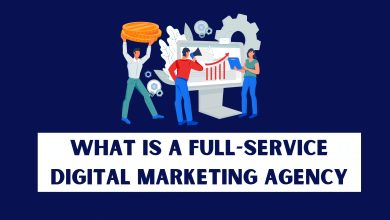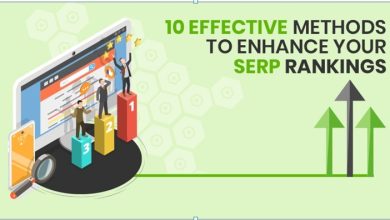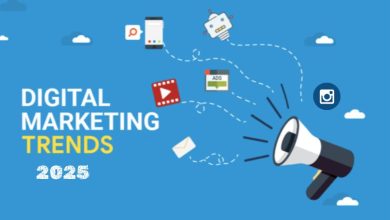Zero to Hero: Build Your Digital Marketing Strategy

The urgency of developing strong digital marketing strategies continues to expand because digital commerce controls present-day business landscapes. Companies at all stages of development need an effective online marketing approach which builds their growth potential and delivers success. A first-time approach often feels overwhelming. you can both construct and succeed by designing your digital marketing strategy from start to peak performance which brings lasting accomplishment.
This guide presents comprehensive instructions for building a digital marketing strategy which transforms novices into digital marketing experts. When you finish reading this guide you will acquire all the elements needed along with newfound expertise to claim your position online.
Step 1: Define Your Business Goals
Begin your digital marketing journey following a vital step toward goal clarity. Your business digital marketing plans must support and advance the main organizational goals consistently. When your goals remain unclear your mission suffers from wasted time and resource because you end up focusing on tactics that lack purpose toward your objectives.
Some common business goals to consider include:
- Brand Awareness: If you are a new business or looking to expand your reach, increasing brand awareness should be your top priority.
- Lead Generation: Do you want to attract potential customers and build your email list? This is a common goal for businesses looking to nurture leads into paying customers.
- Customer Retention: Digital marketing is also key to keeping your existing customers engaged, whether through regular email campaigns or social media interactions.
- Sales/Revenue Growth: If your primary goal is to increase revenue, you will focus on tactics that drive conversions and boost your e-commerce sales or inquiries.
Step 2: Know Your Target Audience
Undertanding your target audience serves as the essential component for digital marketing success. Who are you marketing to? What specific difficulties and requirements and wants do your target customers experience? What are their online habits?
Your audience definition requires creating well-defined buyer personas. A buyer persona represents your perfect target customer by combining empirical research with statistical customer information. The personas you create guide the development of all your content as well as social media expressions and paid advertising activities.
Here’s what you need to consider:
- Demographics: Age, gender, location, income, education level, etc.
- Psychographics: Interests, hobbies, values, lifestyle, and purchasing behavior.
- Pain Points: What problems does your target audience face that your product or service can solve?
- Digital Habits: Which social media platforms do they use? Do they prefer video content, blogs, or podcasts? Are they active in online communities or forums?
Step 3: Research Your Competitors
The next step involves analyzing competitor activities after developing business targets along with understanding your market audience. Examining your competitors’ approaches reveals market possibilities which help your business create noticeable differences.
Take note of the following:
- Competitor Websites: Analyze their website structure, design, and user experience. Look at how they present their products or services and make sure your site can offer something better or more unique.
- Social Media Presence: Review the type of content they post, how often, and how engaged their audience is. This can give you insights into what works (or doesn’t) in your industry.
- SEO Strategy: Use tools like SEMrush, Ahrefs, or Moz to research your competitors’ keywords and backlink strategies. Knowing which keywords are driving traffic to their sites helps you target similar terms and build a content strategy around them.
- Content Marketing: Review the blogs, videos, or case studies your competitors create. How can you make your content more engaging, in-depth, or unique?
Step 4: Choose the Right Digital Marketing Channels
Selecting appropriate digital marketing channels lacks standardized solutions because every business has unique requirements. The channels which work best for your business depend on which audience you want to reach and what objectives you pursue.
Here are some key digital marketing channels you should consider:
- Search Engine Optimization (SEO): SEO involves optimizing your website to rank higher on search engine results pages (SERPs) for relevant keywords. This strategy requires time but is essential for long-term organic traffic.
- Social Media Marketing: Platforms like Facebook, Instagram, LinkedIn, Twitter, TikTok, and Pinterest allow you to build a community and engage with your audience. Consider the platforms your target audience uses and tailor your approach accordingly.
- Content Marketing: Content creation in the form of blogs, videos, infographics, and podcasts can be used to drive traffic to your website, engage with your audience, and establish authority in your niche.
- Email Marketing: Building an email list and creating regular email campaigns is one of the most effective ways to nurture leads and keep existing customers informed about promotions, news, or updates.
- Pay-Per-Click Advertising (PPC): Paid ads through Google Ads, Facebook Ads, and other platforms can help you reach new customers quickly. PPC can be a valuable tool for immediate visibility and targeted lead generation.
- Influencer Marketing: Collaborating with influencers in your niche can help you tap into their established audience and build trust through social proof.
- Affiliate Marketing: You can partner with other businesses or individuals to promote your products in exchange for a commission on sales or leads.
Step 5: Create a Content Plan
After choosing your preferred channels it is important to design content which will appeal directly to your target audience. Your digital marketing success heavily relies on content because excellent relevant engaging material serves as your strategy’s fundamental supporting structure.
Here’s how to build your content plan:
- Content Calendar: Plan your content at least a month in advance, specifying what type of content you’ll create, the publishing date, and the platform.
- Content Variety: Diversify your content to appeal to different audience segments. This might include blog posts, social media posts, podcasts, infographics, eBooks, case studies, videos, webinars, etc.
- Value-Driven Content: Ensure your content provides value. It should educate, entertain, or solve a problem for your audience. Don’t focus solely on selling; instead, position yourself as a helpful resource.
- SEO-Optimized Content: Make sure your content is optimized for search engines. This includes using relevant keywords, creating compelling meta descriptions, and ensuring your content is easily readable.
Step 6: Develop Your Paid Advertising Strategy
While organic growth through SEO and content marketing is important, paid advertising can provide an immediate boost to your business.
Here’s how to craft your paid advertising strategy:
- Set Your Budget: Determine how much you’re willing to spend on paid ads. Start small and scale as you see results.
- Choose the Right Platform: Whether it’s Google Ads, Facebook Ads, Instagram Ads, or LinkedIn Ads, ensure you’re advertising on platforms where your target audience is active.
- Create Targeted Ads: Use audience targeting features to ensure your ads reach the right people. You can target based on demographics, interests, behaviors, and even location.
- A/B Testing: Regularly test different ad creatives and messaging to see what resonates best with your audience.
Step 7: Monitor, Analyze, and Adjust
Digital marketing is not a set-it-and-forget-it process. It’s essential to regularly monitor your performance and make data-driven decisions to optimize your strategy.
Here’s how to track your progress:
- Google Analytics: This tool allows you to track website traffic, user behavior, and conversion rates. Use this data to assess the effectiveness of your SEO and content efforts.
- Social Media Insights: Platforms like Facebook, Instagram, and LinkedIn offer insights into how your posts are performing. Track engagement rates, reach, and follower growth.
- Email Marketing Metrics: Monitor open rates, click-through rates, and conversions to gauge the effectiveness of your email campaigns.
- PPC Analytics: If you’re running paid ads, keep an eye on your ad performance. Look at metrics like click-through rates, cost-per-click, and return on investment.
Based on this data, make necessary adjustments to your strategy. Whether it’s tweaking your ad copy, refining your targeting, or focusing more on certain content types, the key is to keep optimizing.
Step 8: Scale Your Strategy
Once you’ve fine-tuned your strategy and started seeing positive results, it’s time to scale. Scaling means increasing your efforts to reach a larger audience, generate more leads, or drive more sales.
- Increase Your Budget: As you see success with certain channels or campaigns, allocate more budget to scale those efforts.
- Expand Your Content: Start creating more content and exploring new formats to reach a wider audience. Consider investing in high-quality videos, live streams, or podcasts.
- Explore New Channels: If you’ve mastered one or two channels, it’s time to explore others. Experiment with new social media platforms, content formats, or paid advertising methods.
Conclusion
Setting up your digital marketing approach from the ground up appears complex at first but methodical step-by-step work yields an actionable plan that generates business success. Digital marketing maintains its status as a continuous process where commitment alongside optimization and continual adaptation continues to produce results.
Your first step should involve setting clear goals followed by a proper audience identification process and journey through preferred communication platforms. As your business grows you should begin by developing essential content and testing strategies to maximize your reach. Strategic dedication combined with time will turn your digital marketing into superstar capabilities thus building solid foundations for enduring business achievements





